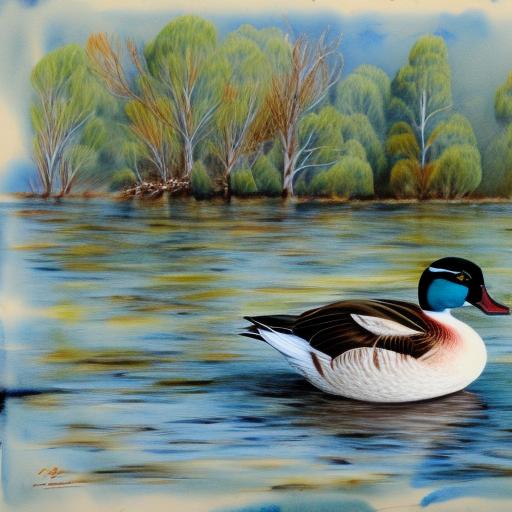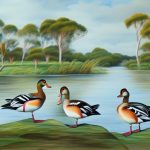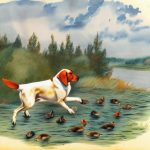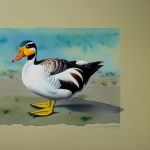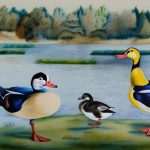Australian wild duck breeds are a diverse group of waterfowl that are native to Australia. These ducks are known for their stunning beauty, unique characteristics, and important role in the ecosystem. There are several different species of wild ducks in Australia, each with its own distinct features and behaviors. Some of the most well-known Australian wild duck breeds include the Pacific Black Duck, the Grey Teal, the Chestnut Teal, and the Australian Wood Duck.
These wild duck breeds are highly adaptable and can be found in a variety of habitats across Australia, including wetlands, rivers, lakes, and coastal areas. They play a crucial role in maintaining the balance of the ecosystem by controlling insect populations, dispersing seeds, and providing food for other wildlife. Australian wild duck breeds are also popular among birdwatchers and nature enthusiasts, who admire their graceful movements and vibrant plumage. In this article, we will explore the characteristics, habitat, behavior, conservation status, and importance of Australian wild duck breeds in the ecosystem.
Key Takeaways
- Australian wild duck breeds are diverse and unique, with a rich history and significance in the country’s ecosystem.
- These wild duck breeds exhibit a range of physical characteristics, from the colorful and vibrant plumage of the Pacific Black Duck to the distinctively patterned Chestnut Teal.
- Australian wild duck breeds can be found in a variety of habitats, including wetlands, rivers, and coastal areas across the continent.
- The mating habits and behavior of Australian wild duck breeds are fascinating, with intricate courtship displays and strong pair bonds during the breeding season.
- Conservation efforts are crucial to protect Australian wild duck breeds from threats such as habitat loss, pollution, and hunting, ensuring their continued presence in the ecosystem.
Characteristics and Physical Appearance of Australian Wild Duck Breeds
Australian wild duck breeds are known for their striking physical appearance and unique characteristics. The Pacific Black Duck, for example, is a medium-sized duck with predominantly dark plumage, a distinctive glossy green patch on its wings, and a bright orange bill. The Grey Teal, on the other hand, is a small duck with mottled grey and brown plumage, a dark eye-stripe, and a pale blue patch on its wings. The Chestnut Teal is easily recognizable by its chestnut-colored head and neck, while the Australian Wood Duck has a striking combination of black and white plumage with a distinctive dark eye patch.
In addition to their beautiful plumage, Australian wild duck breeds also have unique physical adaptations that allow them to thrive in their natural habitats. Their webbed feet are perfectly suited for swimming and diving, while their streamlined bodies enable them to move effortlessly through the water. These ducks also have specialized bills that are designed for foraging for food in the water and mud. Overall, Australian wild duck breeds are not only visually stunning but also well-adapted to their environment, making them an integral part of the Australian ecosystem.
Habitat and Distribution of Australian Wild Duck Breeds
Australian wild duck breeds can be found in a wide range of habitats across the continent, from coastal wetlands to inland rivers and lakes. The Pacific Black Duck, for example, is commonly found in freshwater wetlands, estuaries, and coastal lagoons throughout Australia. The Grey Teal prefers shallow freshwater habitats such as swamps, lakes, and rivers, while the Chestnut Teal is often found in coastal saltmarshes and estuaries. The Australian Wood Duck is known for its preference for open woodlands, grasslands, and agricultural areas.
These diverse habitat preferences allow Australian wild duck breeds to thrive in various environments and contribute to the overall biodiversity of the continent. Their ability to adapt to different habitats also makes them resilient in the face of environmental changes and human disturbances. However, despite their adaptability, Australian wild duck breeds still face threats to their natural habitats, which can impact their distribution and population numbers.
Behavior and Mating Habits of Australian Wild Duck Breeds
Australian wild duck breeds exhibit a wide range of behaviors and mating habits that are fascinating to observe. During the breeding season, male ducks engage in elaborate courtship displays to attract females. These displays often involve intricate movements, vocalizations, and displays of their colorful plumage. Once a pair has formed, they will build a nest in a secluded location near water, using grasses, reeds, and other vegetation to create a comfortable nesting site.
After the eggs are laid, both male and female ducks take turns incubating them until they hatch. Once the ducklings have hatched, they are cared for by both parents and taught essential survival skills such as foraging for food and avoiding predators. Australian wild duck breeds are also known for their migratory behavior, with some species traveling long distances between breeding and wintering grounds. This behavior allows them to take advantage of seasonal food resources and find suitable nesting sites.
Overall, the behavior and mating habits of Australian wild duck breeds are complex and varied, reflecting their adaptability and resilience in the face of changing environmental conditions. By understanding these behaviors, researchers can gain valuable insights into the life cycle and ecology of these fascinating waterfowl.
Conservation Status and Threats to Australian Wild Duck Breeds
Despite their adaptability and widespread distribution, Australian wild duck breeds face a range of threats that impact their conservation status. Habitat loss and degradation due to urbanization, agriculture, and land clearing are major threats to these ducks’ natural habitats. Pollution from agricultural runoff and industrial activities can also contaminate waterways and affect the quality of their aquatic habitats.
In addition to habitat loss and pollution, Australian wild duck breeds are also vulnerable to hunting pressure and predation by introduced species such as foxes and feral cats. Climate change is another significant threat that can impact the availability of suitable breeding and feeding grounds for these ducks. Rising temperatures and changes in rainfall patterns can alter wetland ecosystems and disrupt the natural cycles of food availability.
Efforts to conserve Australian wild duck breeds include habitat restoration projects, wetland conservation initiatives, and research into the impacts of climate change on their populations. Conservation organizations also work to raise awareness about the importance of protecting these ducks and their habitats among local communities and policymakers. By addressing these threats and implementing effective conservation measures, it is possible to ensure the long-term survival of Australian wild duck breeds for future generations.
Importance of Australian Wild Duck Breeds in the Ecosystem
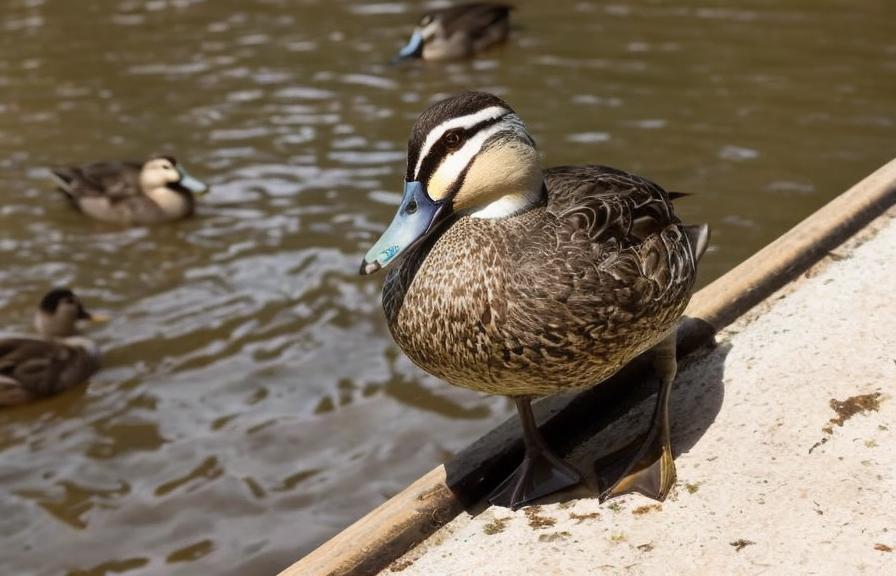
Australian wild duck breeds play a crucial role in maintaining the balance of the ecosystem through their interactions with other species and their impact on the environment. As omnivorous waterfowl, they consume a wide variety of plant matter, aquatic invertebrates, and small fish, which helps control insect populations and maintain the health of aquatic ecosystems. Their foraging behavior also contributes to seed dispersal, which can promote plant diversity in wetland habitats.
In addition to their ecological role as consumers and seed dispersers, Australian wild duck breeds are an important food source for a variety of predators such as raptors, foxes, and crocodiles. By providing food for these predators, they contribute to the overall functioning of food webs in their natural habitats. Furthermore, their migratory behavior can also have far-reaching effects on ecosystems by transporting nutrients between different regions.
Overall, Australian wild duck breeds are integral components of healthy wetland ecosystems in Australia. Their presence contributes to the overall biodiversity of these habitats and supports the functioning of complex food webs. By understanding their ecological importance, we can better appreciate the value of conserving these beautiful waterfowl for future generations.
Efforts in Preserving and Protecting Australian Wild Duck Breeds
Efforts to preserve and protect Australian wild duck breeds involve a combination of conservation strategies aimed at addressing the various threats they face. Habitat protection is a key priority for ensuring the long-term survival of these ducks, with initiatives focused on conserving wetlands, restoring degraded habitats, and creating protected areas where they can thrive without disturbance.
In addition to habitat protection, efforts to reduce hunting pressure on wild duck populations through sustainable management practices are essential for their conservation. This includes setting limits on hunting seasons and bag limits to ensure that populations remain healthy and sustainable. Education and outreach programs aimed at raising awareness about the importance of conserving these ducks among local communities can also help garner support for conservation efforts.
Research into the ecology and behavior of Australian wild duck breeds is another important aspect of conservation efforts. By understanding their habitat requirements, migration patterns, and population dynamics, researchers can develop effective management strategies that support their long-term survival. Furthermore, monitoring programs can track changes in population numbers and distribution over time to assess the effectiveness of conservation measures.
Overall, preserving and protecting Australian wild duck breeds requires a coordinated effort involving government agencies, conservation organizations, researchers, local communities, and other stakeholders. By working together to address the threats facing these ducks and implementing effective conservation measures, we can ensure that they continue to enrich Australia’s natural heritage for generations to come.
If you’re interested in learning more about Australian wild duck breeds, you might also enjoy reading about creating a suitable environment for your poultry. Check out the article on creating a garden chicken coop to provide a safe and comfortable space for your feathered friends. Understanding the needs of different poultry breeds, including ducks, can help you create an environment that supports their natural behaviors and overall well-being.
FAQs
What are some common Australian wild duck breeds?
Some common Australian wild duck breeds include the Pacific Black Duck, the Grey Teal, the Chestnut Teal, the Australian Wood Duck, and the Pink-eared Duck.
What is the habitat of Australian wild duck breeds?
Australian wild duck breeds can be found in a variety of habitats including wetlands, rivers, lakes, and coastal areas. They are adaptable and can be found in both freshwater and saltwater environments.
What do Australian wild duck breeds eat?
Australian wild duck breeds are omnivorous and their diet consists of a variety of foods including aquatic plants, insects, small fish, and crustaceans. They may also forage for grains and seeds in agricultural fields.
Are Australian wild duck breeds protected?
Many Australian wild duck breeds are protected under various conservation laws and regulations. It is important to check local laws and regulations before hunting or disturbing these species.
How do Australian wild duck breeds reproduce?
Australian wild duck breeds typically build their nests on the ground near water and lay a clutch of eggs. The female incubates the eggs and cares for the ducklings after they hatch. The ducklings are precocial, meaning they are able to feed themselves shortly after hatching.
Meet Walter, the feathered-friend fanatic of Florida! Nestled in the sunshine state, Walter struts through life with his feathered companions, clucking his way to happiness. With a coop that’s fancier than a five-star hotel, he’s the Don Juan of the chicken world. When he’s not teaching his hens to do the cha-cha, you’ll find him in a heated debate with his prized rooster, Sir Clucks-a-Lot. Walter’s poultry passion is no yolk; he’s the sunny-side-up guy you never knew you needed in your flock of friends!

